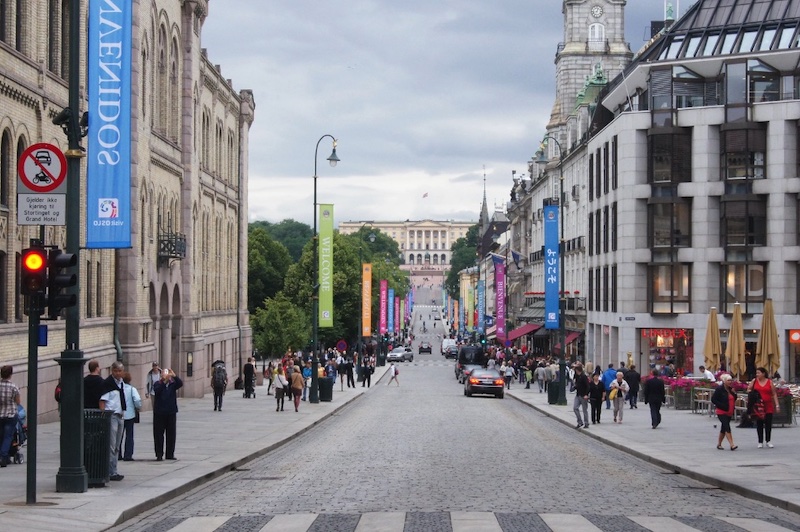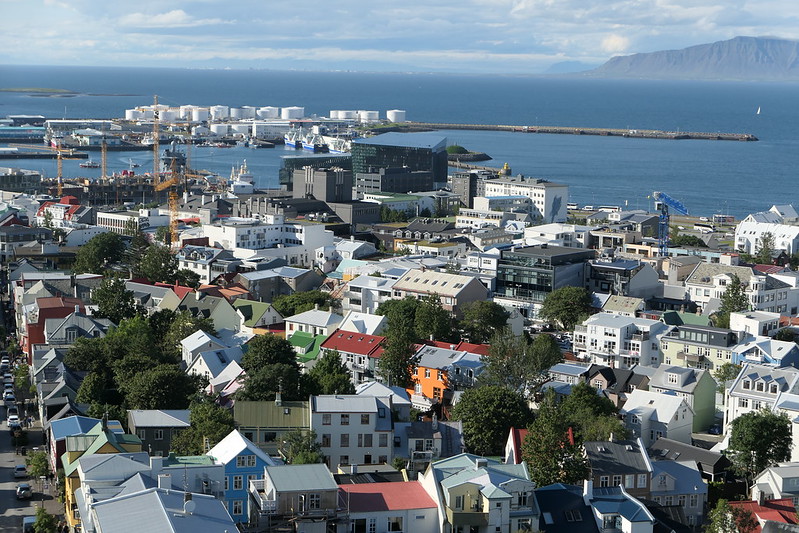Expensive cities in Europe are very common. Some of the most expensive cities in Europe include London, Paris, Rome and Barcelona. The high cost of living is mostly because of their geographical location as well as the high property prices within these cities. However, there are other factors that can contribute to the high cost of living such as transportation costs and food prices.
Introduction
You’ve probably heard the phrase, “You get what you pay for.” This is especially true when it comes to the cost of living in a city. In Europe, some cities have a reputation as being more expensive than others. When you’re thinking about what your monthly budget can afford and which city would be best for your needs, it’s important to keep an eye out for these costly cities on your list.
The following article contains information about the 10 most expensive cities in Europe. We begin with an overview of our criteria for determining which cities made this list and then move into a discussion of each one individually. You’ll also find some suggestions on how to save money while visiting any one of these European destinations!
Paris, France

Paris is one of the most popular destinations in Europe for tourists. The city’s popularity as a tourist destination means that it has a high cost of living, which includes expensive housing and real estate prices. It also has some of the highest luxury goods prices in Europe due to its popularity with wealthy travelers from around the world.
Although many people travel to Paris for its nightlife, which includes high-end restaurants, live music and nightclubs; it’s also known for its fashion and is home to many popular brands like Chanel, Yves Saint Laurent and Christian Dior.
Paris is also a hub for art, culture and history. The city has more than 2,000 museums and art galleries, including the Louvre Museum which is the most visited museum in the world. It’s also home to the Musée d’Orsay which houses many works by impressionist artists like Edgar Degas, Édouard Manet and Claude Monet.
Zurich, Switzerland

Zurich, Switzerland is one of the most visited cities in Europe. It’s home to several museums and art galleries and has a very high standard of living. The city has a population of about 450,000 people with an unemployment rate that’s about 2%.
Zurich is known for its thriving economy and low unemployment rate, which contributes to its high cost of living. One major contributor to this high cost is housing: rent prices are among the highest in Europe (and it doesn’t matter whether you’re renting an apartment or buying one). Renting an apartment can cost anywhere from $2,500-$9000 per month while buying one could cost up to $950k! Groceries tend to be more expensive than those found at U.S grocery stores like Walmart or Kroger as well due primarily because they’re imported from other countries like France which means higher shipping costs passed down onto consumers here at home.”
Geneva, Switzerland

With its international reputation, Geneva is known as the most expensive city in Switzerland. Though you may not have heard of it before, this European gem is home to some of the most important organizations in the world. It’s also one of the wealthiest cities with a population over 100,000 people.
The cost of living in Geneva is high because it has a very strong economy and high standard of living. However, if you’re looking for stability and safety for your investments then Geneva might be an option for you!
Oslo, Norway

Oslo, Norway is the European capital with the highest cost of living. It has a population of around 620,000 people and has been a settlement since year 900. The city is known for its high taxes and the welfare state. For example, you can receive free healthcare and education in Oslo.
The average yearly income per person in Oslo is roughly $52,000 USD (€44k). This makes it one of the richest cities in the world. With this type of money, you would expect everything to be expensive; however, that’s not always true! Some areas are cheaper than others—even if they’re still pretty dang expensive!
Most Expensive Streets In Europe:
If one street could sum up how expensive things are in Oslo then it would have to be Bogstadveien—a street that runs through central Oslo along a ridge overlooking Oslofjorden bay area connecting Frogner Park with Bygdøy peninsula where several museums can be found including Munch Museum located within Frogner Manor House itself which houses many works by Edvard Munch such as his famous painting The Scream (1893).
Copenhagen, Denmark

Copenhagen is the most expensive city in Europe due to its high cost of living. The Danish capital is known for its high taxes and welfare state, which provides free healthcare and education to residents. The average citizen pays a lot more for housing and transportation than someone living in the United States or other parts of Europe.
However, this might not be such a bad thing when you consider Copenhagen’s standard of living: it has been named one of the friendliest and most livable cities in the world.
Copenhagen is also a popular tourist destination, drawing over 2 million visitors each year. The city is known for its canals, cobblestone streets and architecture dating back to the 17th century. It has also been recognized as one of the top 10 best cities in the world by Lonely Planet.
Stockholm, Sweden

Stockholm, Sweden is one of the most expensive cities in Europe. It’s also a very livable and beautiful city, with a high standard of living. What makes it so costly? The cost of living is high due to its high taxes and welfare state, which provide free healthcare and education. In addition, there are many cultural attractions that visitors can enjoy without paying an entrance fee—or if they do pay a fee, the price is much lower than other Western European countries.
By contrast, Geneva (a Swiss city) and Zurich (a Swiss canton) were found to be more expensive than Stockholm because their banking industries support an elite lifestyle for bankers who live in these regions—the cost of housing there is also quite high as well as compared to other parts of Switzerland or even Europe.
London, UK

London is one of the most expensive cities in Europe, and it’s easy to see why. With a population of 8.7 million people and being a global financial center, London has high costs for both transportation and housing. In addition to these two major expenses, luxury goods such as fine dining are also very expensive in London compared to other European cities. However, because salaries are generally high enough for the average person here (compared with other European cities), living costs aren’t too much of an issue for locals or visitors alike.
London is a great city for both tourists and locals. It’s filled with history and culture, but also has a lively nightlife scene. For those who want to live here, it’s important to know that the city has some of the most expensive housing in Europe, which can make finding an apartment challenging for many people.
Moscow, Russia

Moscow is a big city, and as such it has major costs associated with its status. For example, the cost of housing in Moscow is extremely high due to the fact that much of the population lives in large apartment buildings. The average monthly rent for an apartment in Moscow is five times higher than that of Paris or Munich, according to Numbeo data. Transportation costs are also very high because public transportation facilities are insufficient for such a large population.
When it comes to luxury goods and fine dining options, both can be found in abundance within Moscow as well—but you will pay top dollar for them here!
In addition, the high cost of living in Moscow has caused many residents to seek employment outside the city. In fact, there are more people working in other parts of Russia than there are living in Moscow itself.
Reykjavik, Iceland

Reykjavik is the capital and largest city of Iceland, with a population of around 116,000 people. Its high cost of living can be attributed to its remote location and small population, which makes it more expensive to import goods. There are few natural resources in Iceland and most food items must be imported from mainland Europe or North America. Food prices are therefore relatively high.
The cost of living in Reykjavik has increased dramatically over the last decade due to an influx of tourism into the city as well as an increase in wages for locals. In addition to its famous restaurants, Reykjavik also features several museums and art galleries featuring pieces by local artists such as Olafur Eliasson (who recently constructed his exhibition on London’s South Bank)
Edinburgh, Scotland

If you’re looking for a European city that’s popular with tourists, Edinburgh is the place for you. The Scottish capital has all the charm of a historic village, but it also has amenities like restaurants and museums that attract thousands of visitors every year.
Because Edinburgh is such a popular destination, prices are higher than average. Housing is especially expensive: rent averages £1,000 per month, while property prices range between £200 and £800 per square foot (or $250–$900). Transportation costs also run high due to congestion; an Uber ride costs about £1 per mile (or $1/mile) during off-peak hours and can be more than double that during rush hour or on weekends when hotels are closed to visitors.
Even basic goods like groceries cost more in Scotland than they do elsewhere in Europe; you’ll pay up to 50% more than what you would in London or Paris when shopping at grocery stores like Tesco or Sainsbury’s. Alcoholic beverages are also very pricey in Edinburgh—a bottle of wine costs around €13 ($15), while imported beers will set you back €5 ($6).
Due to high taxes on tobacco products and alcohol consumption as well as utility bills costing up to three times higher than those seen elsewhere across Europe (e.g., gas at nearly 5p/kWh; electricity at 5p/kWh plus standing charges), residents end up paying significantly higher living expenses despite earning less income from their jobs

Steven Yeager is a passionate travel blogger and content creator. When he’s not working part-time at a technology company, he can be found exploring the world and documenting his adventures on his blog, SYTraveling.com. With a love for experiencing new cultures and a talent for capturing stunning photographs, Steven shares his travel experiences with his readers in a way that is both informative and visually stunning. Follow his journey as he travels to some of the most exotic and beautiful locations around the globe, and be inspired to plan your own adventures.
